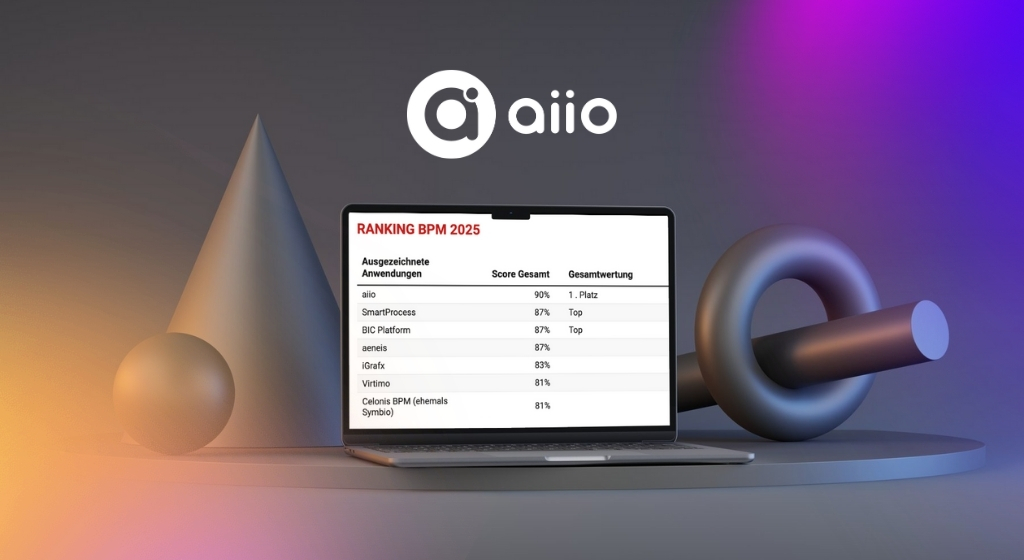Visualize to Optimize: Why Flowcharts are Real Game Changers!

A Look at the Source
Let's take a step back: What exactly is a 'Flowchart'? The trusted, artificially intelligent assistant might fabricate a definition of the following kind in response to this question:
'A flowchart is a visual representation of a process, system, or algorithm, consisting of various symbolic shapes such as rectangles, rhombuses, circles, and arrows. These symbols represent the different steps, decisions, actions, and connections in the process.'
Okay, thanks, post finished, right? Well, let's break that down: A flowchart simply graphically represents the individual steps of a process. Different work steps, decisions, and any other events that may occur during the process are distinguished using different geometric shapes. The sequence of the process, or the 'flow' in which tasks are to be completed, is clarified through the use of arrows. This creates a connected graph that is read from one (or more) starting event(s) to one (or more) end point(s), potentially with a loop or two along the way. The whole thing could then look like this:

The question of why this particular form of representation is used for visualizing PROCESSES is self-explanatory here: we are visualizing EXACTLY THAT, a SEQUENCE.
Once it's flowing....
So, let's turn our attention to the advantages of representing a process as a flowchart; after all, I could just as easily record my process as continuous text, in a table, or as a checklist.
Clear Visualization: Well, first of all, a visualization is naturally quicker and easier to understand than a large pile of text. The visual component makes the structure of the process much easier to understand; a factor that becomes especially important when more than one strand is running simultaneously, or when loops can occur. This is where a flowchart offers great advantages, even over a tabular representation.
Identify Optimization Potential: The improved visibility and comprehensibility of the individual work steps ensure that it becomes easier to see where problems can occur in the process. The marketing team generates leads en masse, but only a handful end up with sales? Then something is probably going wrong in the communication between the departments. In this sense, it is easier to understand when errors occur in the process and how they can be corrected.
Effective Communication: Representing a process as a flowchart creates a 'common language' for everyone involved in the company, regardless of which department or location they may come from. The C-level manager should be able to read and understand the flowchart just as well as a trainee in the production department (author's opinion: and if that's not the case, you might be doing something wrong).
Simple Standardization: Representation as a flowchart provides an efficient basis for standardizing processes. If everyone knows what the process has to look like graphically, they also know how it has to be carried out in reality. This also ensures more consistent results.
Understand Contexts: Flowcharts transparently show the relationships between different activities in a process. This transparency ensures that everyone understands their role in the process and how they interact with the rest of the workforce in relation to this process.
Measurement of KPIs: Flowcharts provide an ideal basis for defining key performance indicators (KPIs): since every step and every decision in the process is clearly defined, the performance of the process can be better analyzed and monitored.
Without simplicity and clarity, it stagnates
Of course, all of these advantages only apply if they are really understandable. This means that the flowchart must be so precise and detailed that all facets of a process can be understood in an instant, but should not be so complicated that confusion or misunderstanding could potentially occur. Striking this 'golden mean' requires a great deal of sensitivity on the part of the process owner.
The creation and updating of flowcharts also involves a certain amount of effort; both in the initial implementation and in the continuous maintenance. It should also be said that the rather static nature of a flowchart is naturally not ideally suited to every process and sometimes does not easily capture the dynamics of the 'real world'.
However, it should be said that sufficient care and experience on the part of the process owner in the company can remedy this: it is up to the process manager to identify and enforce the right balance for the company here.
Conclusion: the river often leads to success
It is not without reason that flowcharts are used for all kinds of processes: they simply offer a simple way to implement clear and transparent communication of processes. Flowcharts offer the possibility of comprehensively analyzing both individual steps and entire processes - and, if handled correctly, offer virtually no disadvantages.
So, what are you waiting for? Let's go, create a flowchart for your processes!
Don't hesitate, ask directly
Please use our contact form. Our team will get back to you as soon as possible.

.jpeg)



